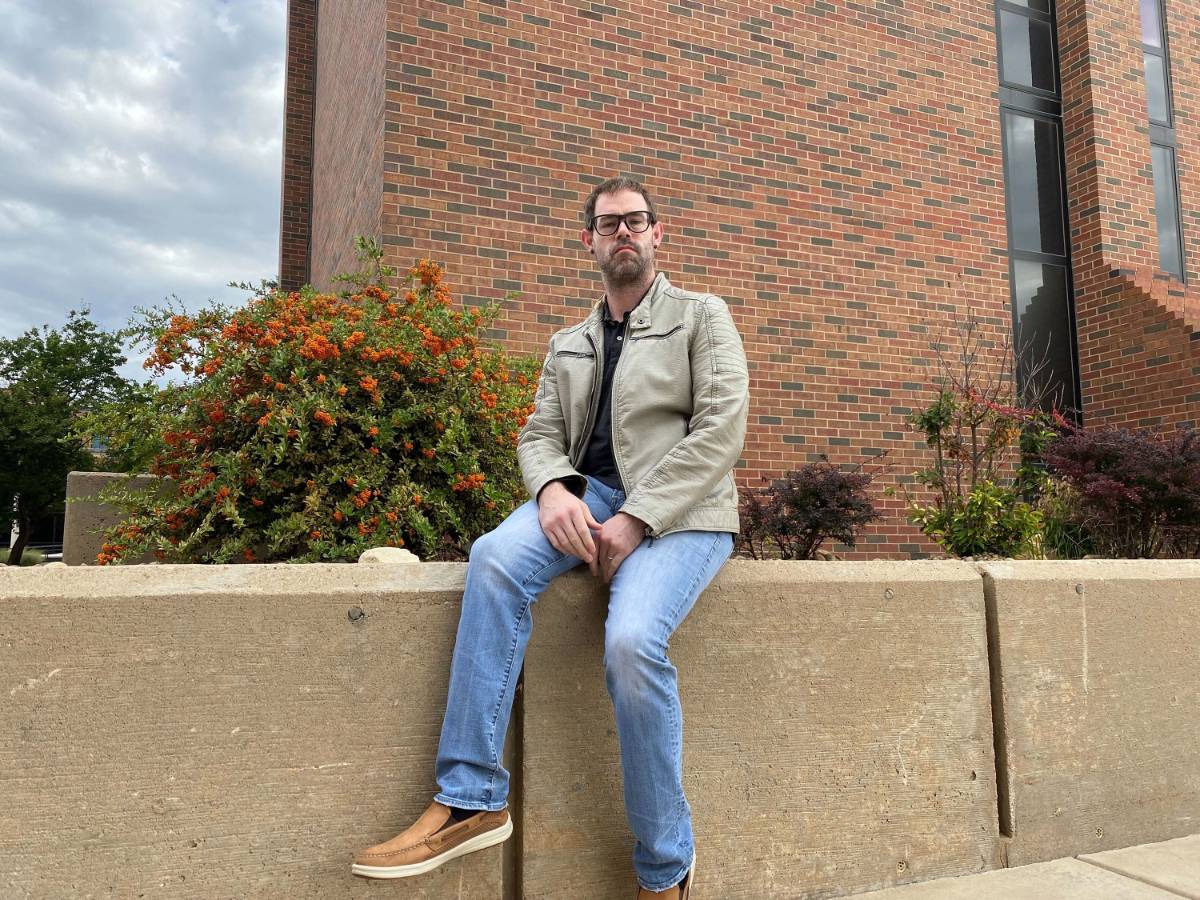Before he could even walk, JW Webster could do something only a handful of other people in the world could do: speak the Cherokee language.
Today Webster is one of only 1,200 people who can fluently speak the indigenous language — which is ranked as one of the most difficult languages to learn — and one of only a handful who can read and write Cherokee. In August, Webster’s sacred knowledge became part of Wichita State University’s applied linguistics program through a new class, Elementary Cherokee I (LING 590).
Webster, a certified Cherokee language instructor, grew up in Cherokee Nation in Oklahoma with his great aunt, and he didn’t learn English until just before he started kindergarten.
“My aunt could speak English, but she was traditional. It was a requirement to speak Cherokee at home,” Webster said. “I’m a quarter Cherokee, but I was raised with full blood. So my mind and my heart and my thought are all full-blood Cherokee.”
His language has been a powerful connection to the Cherokee culture, he said.
“Because I do know English and Cherokee, I can tell you beyond a shadow of a doubt that the way I speak in Cherokee is a direct tie to our culture. By knowing how to talk Cherokee, I know how we as Cherokees think. That’s where our culture lies,” said Webster, who was 17 years old when he was certified by Cherokee Nation to teach the language.
Throughout the past few centuries, the number of people who speak indigenous languages has dwindled dramatically, as many Native Americans were killed, and government policies systematically banned and discouraged Native Americans from speaking their languages and practicing their cultural rituals.
And Cherokee isn’t a language that a person can casually pick up. It’s rated a class IV language in its degree of difficulty, making it among the most difficult to learn. Not only is it a polysynthetic language (meaning a sentence-word might be comprised of several single words), but it’s also a tonal language (meaning how a word is spoken can change its meaning). And on top of that, the written language has no diacritics (such as accent marks) to let speakers know where to put the emphasis on certain words.
But, Webster says, learning the Cherokee language gets a bit easier when students simultaneously learn about Cherokee culture.
"I teach culture with the language class, which is a new approach to teaching Cherokee. It’s our belief that you can’t learn Cherokee without learning how we live."
— JW Webster, certified Cherokee language instructor at WSU
“If you try to learn Cherokee culture without the language, it’s almost impossible to truly understand why we do things the way we do them,” he said. “I teach culture with the language class, which is a new approach to teaching Cherokee. That way, students learn unique Cherokee thought process patterns as they learn the language. It’s our belief that you can’t learn Cherokee without learning how we live.”
Student response to the class has been overwhelmingly positive, and it gives them an opportunity to not only learn a new language, but it helps them understand the world better.
“The languages of North America are different than anything in Asia, Europe or Africa, so I thought it would be a good way to broaden my horizons,” said Raul Rangel, senior in applied linguistics and modern classical languages. “I think it is helping me find ways in which people communicate and think. For example, in the way Cherokee is structured shows how it’s speakers see the world as if animals, plants and humans are equal in terms of pronouns, unlike most European languages.”
Rangel said learning Cherokee is a challenge, but he wants to apply this experience to his future endeavors.
“Every language in the world is a different way to look at the world. Right now, more than ever, languages are dying and losing their place in their respective communities, and it is important to recognize this as we go forward. Taking a class such as Cherokee helps us understand many things about how the human mind works,” said Rangel, who’s from Guadalajara, Mexico.
Eventually, Wichita State plans to add Cherokee II and Cherokee III language courses, which will make students “semi-fluid speakers of the language,” Webster said.
The addition of the Cherokee course is part of the university’s new applied linguistics curriculum, and it demonstrates WSU’s commitment to its communities.
Cherokee is an indigenous language of the Iroquoian language family with less than 2,000 speakers.
“A course offering in Cherokee is an acknowledgment of WSU's commitment to community engagement and a recognition of the indigenous history of the land WSU was built on," said Dr. Mythili Menon, assistant professor of English and linguistics.
Webster said that he’s helping students broaden their worldview and bridge a cultural gap.
“How better can someone learn to be tolerant of the people in this world and the diverse cultures than taking a Cherokee language class, which was one of the first languages heard and spoke in this part of the world?” Webster said.


 File
File